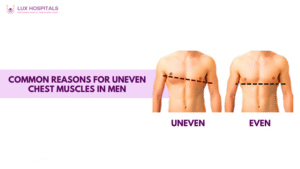Breast Augmentation After Pregnancy: What You Need to Know?

Breast augmentation after pregnancy is a popular option among women seeking to restore their pre-pregnancy breast appearance. Pregnancy and breastfeeding can cause changes like sagging, deflation, and asymmetry in the breasts. This comprehensive guide explains everything you need to know about breast augmentation after pregnancy, including procedure options, recovery, risks, and long-term care.
Why Consider Breast Augmentation After Pregnancy?
Many women experience the following breast changes post-pregnancy:
- Loss of volume and firmness
- Sagging or stretched skin
- Asymmetrical breasts
- Drooping nipples
Breast augmentation after pregnancy can help restore:
- Firmer and fuller breasts
- Improved symmetry
- Increased confidence in one’s body and self-worth
Best Timing for Breast Augmentation After Pregnancy
Physicians advise waiting six months or more after quitting. Breastfeeding before considering surgery. This allows:
- Breasts to settle into their natural post-lactation size
- Hormones to normalize
- Accurate assessment of breast shape and needs
Pro tip: Avoid surgery while breastfeeding or during significant weight fluctuations.
Types of Implants Used in Post-Pregnancy Procedures
Implants are a core part of breast augmentation after pregnancy, with two main types:
- Silicone implants: Softer and more natural in feel
- Saline implants: Filled with sterile salt water, often adjustable
Key decisions include:
- Shape: Round or anatomical (teardrop)
- Texture: Smooth or textured
- Placement: Over or under the muscle (sub-glandular vs. submuscular)
Combining Breast Lift with Augmentation
After pregnancy, implants alone may not address sagging. Many women choose a breast lift (mastopexy) with breast augmentation after pregnancy for better results.
Benefits of combining both:
- Lifts and reshapes sagging breasts
- Reposition nipples if needed
- Offers firmer, perkier breasts with added volume
How to Prepare for Breast Augmentation Surgery?
To ensure the best outcome from breast augmentation after pregnancy, follow these steps:
- Schedule a full medical consultation
- Stop smoking and certain medications before surgery
- Get lab tests and medical clearance
- Maintain a stable weight
- Plan post-op help at home (especially with young children)
Recovery Timeline and What to Expect
Recovery after breast augmentation after pregnancy varies by individual but typically follows this timeline:
- Week 1–2: Swelling, soreness, restricted movement
- Week 3–4: Light activity resumes; avoid heavy lifting
- Week 6+: Full activity allowed; final shape begins to show
Tips for smooth recovery:
- Wear surgical or support bras
- Sleep on your back with elevated pillows
- Avoid lifting toddlers or doing strenuous chores
Risks and Considerations to Keep in Mind
Like any surgery, breast augmentation after pregnancy involves some risks:
- Infection
- Bleeding or fluid buildup
- Scarring or asymmetry
- Capsular contracture (hardening around the implant)
- Rupture or implant displacement
Minimize risks by:
- Choosing a board-certified plastic surgeon
- Following all pre- and post-op instructions
- Attending regular follow-ups
Long-Term Maintenance and Results
Results from breast augmentation after pregnancy are long-lasting but not permanent. Here’s what you should know:
- Implants may need replacement every 10–15 years
- Lifestyle changes, pregnancy, or weight gain can affect results
- Routine check-ups, MRIs, or ultrasounds are recommended
Tips for maintaining results:
- Wear supportive bras
- Maintain a healthy lifestyle
- Avoid dramatic weight changes
Boosting Confidence and Body Image Post-Pregnancy
Beyond physical transformation, breast augmentation after pregnancy often improves:
- Self-confidence in clothes and swimsuits
- Body image and sexual well-being
- Mental health, by feeling more like your “pre-baby” self
It’s a personal decision, but for many moms, it’s a positive step toward reclaiming control over their appearance.
Conclusion
Breast augmentation after pregnancy offers women a chance to regain confidence and restore their pre-baby figure. The procedure can produce stunning, natural results with careful planning, the right surgeon, and realistic expectations. Whether you’re addressing volume loss, sagging, or asymmetry, breast augmentation after pregnancy can help you feel more confident and comfortable in your body again.
FAQ’s (Frequently Asked Questions)
It's best to wait at least 6 months after breastfeeding to allow the breasts to stabilize. Hormones and glandular tissue need time to return to normal. This ensures better implant sizing and results.
Yes, following breast augmentation, the majority of women are still able to nurse. after pregnancy. The risk is lower when implants are placed under the muscle and ducts remain untouched. However, success depends on your natural milk-producing ability, too.
If you have sagging or stretched skin after pregnancy, you may need a breast lift in addition to your breast augmentation. Implants restore volume, but a lift corrects drooping. Combining both offers a more youthful, lifted contour.
Silicone implants are usually preferred for breast augmentation after pregnancy due to their natural texture. However, saline implants are also viable and slightly more adjustable. Your surgeon will assist you in making a decision based on your goals and body type.
Recovery can be more demanding if you have young children at home. Arrange for help during the initial weeks. Avoid lifting, bending, or engaging in vigorous activity during healing from breast augmentation after pregnancy.
Yes, breast augmentation after pregnancy can result in very natural-looking breasts, especially with modern implant options and expert techniques. Selecting the appropriate implant size and location is essential for natural results. You can rely on a talented surgeon to attain proportion and balance.



















